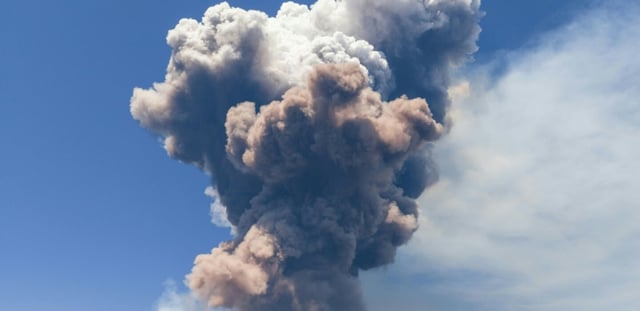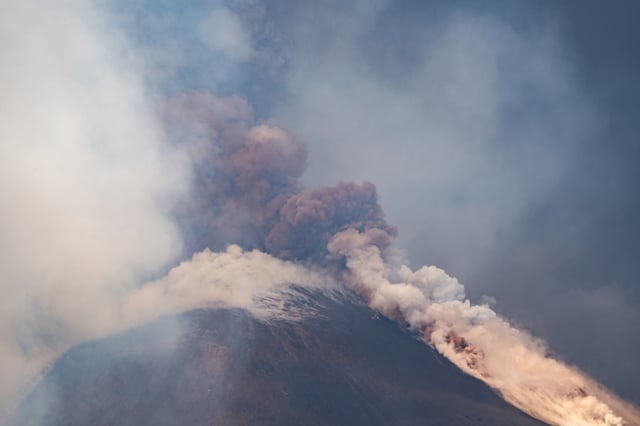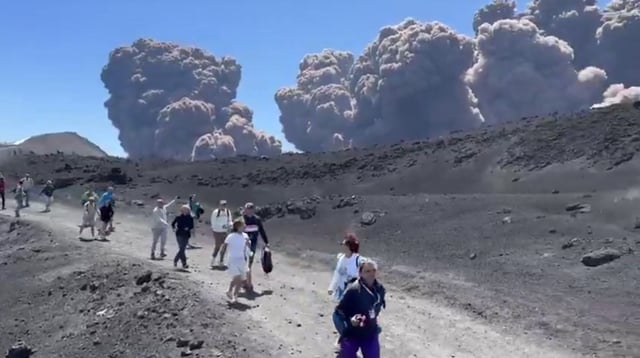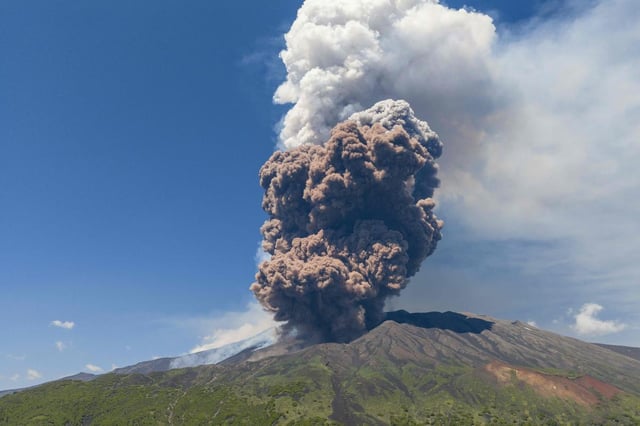Overview
- The eruption began late on June 1 and intensified overnight with explosive activity at Etna’s southeast crater transforming into a sustained lava fountain.
- Thermal cameras recorded pyroclastic flows and a dense ash cloud that drifted southwest over surrounding areas.
- Volcanic observation authorities raised the aviation alert to red, the highest level for flights over Sicilian airspace.
- Catania International Airport has continued normal flight operations despite the red alert, with no reported disruptions to traffic.
- Fine volcanic ash settled in southern localities such as Piano Vetore, prompting local agencies to monitor air quality and surface accumulation.



